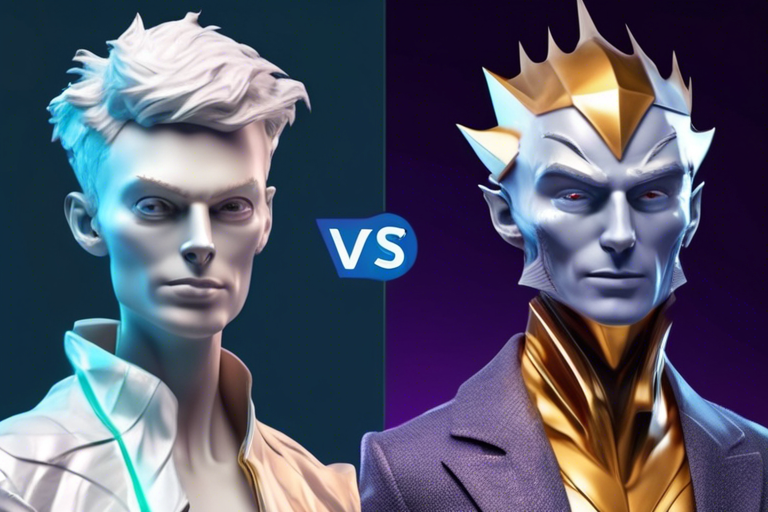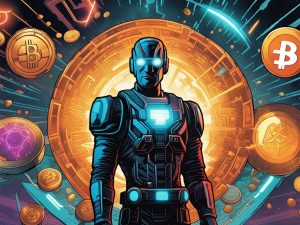Solana vs Ethereum: A Comparison of Leading Blockchains in the Cryptocurrency Sector
When it comes to the world of cryptocurrencies, two prominent blockchains stand out: Solana and Ethereum. These networks have robust DeFi ecosystems and host a variety of successful applications. Both Solana and Ethereum are working towards creating a thriving web3 environment and aim to become the primary layer of the on-chain future. Additionally, the competition extends to the token level, with ETH and SOL vying to provide the best returns in the market. Let’s delve into the details of these two leading blockchains below.
The Technological Distinctions Between Solana and Ethereum
At the forefront of the crypto realm, the Solana vs Ethereum battle unfolds as one of the most intense clashes in recent history. These two blockchains have been engaged in a longstanding conflict to establish dominance as the premier web3 infrastructure. Despite their rivalry, Solana and Ethereum exhibit significant differences on a technological level:
– Ethereum operates as an EVM network utilizing the Solidity programming language, while Solana functions as an SVM network built with C, C++, and Rust, leading to distinct approaches in decentralized application development.
– The concept of an “account” also varies between Ethereum and Solana ecosystems. On Ethereum, an account refers to an entity owning ether (ETH) and capable of initiating transactions, classified into EOA (Externally Owned Account) and CA (Contract Account).
– EOA: Account with a private key, similar to a wallet.
– CA: Account for smart contracts without a private key, executing code via an EVM call.
– Conversely, in Solana, the concept of an “account” encompasses an entity capable of storing and saving data. Transactions’ state is stored using accounts, akin to operating systems like Linux. Notably, Solana natively supports account abstraction, facilitating self-calling between programs. Solana accounts include Executable accounts (program accounts) for smart contracts and Non-executable accounts (data accounts) for receiving tokens or data.
–
Diverse Approaches to DeFi Development
Delving into the less technical aspects, Ethereum and Solana adopt distinct marketing strategies for their respective DeFi environments, catering to diverse target audiences:
– Ethereum radiates an “institutional” character, emphasizing network security and decentralization, aligning with the chain’s core values.
– On the other hand, Solana embodies a more “smart” persona, prioritizing operational scalability and cryptographic efficiency, enhancing user experience and transaction throughput.
– Ethereum’s DeFi ecosystem boasts a TVL of $59 billion, significantly surpassing Solana’s $3.5 billion. Consequently, Ethereum adopts a more subdued communication style with the public, focusing less on user engagement.
– Solana, driven by innovation, introduces cutting-edge products like the Saga smartphone and Blinks to enhance retail adoption, positioning the network as efficient and user-friendly, albeit less secure and decentralized compared to Ethereum.
– Ethereum emerges as a secure yet less performant platform, while Solana offers a more dynamic but less secure gateway for users.
If you are a high-net-worth individual with moderate risk exposure, Ethereum may appeal to you. Conversely, if you are young, daring, and budget-conscious, Solana’s features might resonate with you.
Leading Web3 Dapps in Solana and Ethereum Ecosystems
The ongoing rivalry between Ethereum and Solana manifests uniquely in the development of top-notch decentralized web3 applications:
– In the Ethereum ecosystem, the largest dapp by TVL is the liquid staking platform Lido, dominating the DeFi landscape. Other successful Ethereum dapps include EigenLayer, Aave, Maker, Ether.fi, Uniswap, RocketPool, Ethena, and Pendle.
– Solana’s protocol suite features Jito as the flagship dapp with a TVL of $1.74 billion. Notable Solana applications include Marinade, Kamino, Sanctum, Jupiter, Marginfi, Drift, BlazeStake, Meteora, and Solend.
– Ethereum’s dapps are predominantly integrated with various layer-2 solutions, bolstering scalability. However, increasing blockspace requests lead to liquidity fragmentation, posing challenges for Ethereum’s growth.
– Solana critics highlight the network’s limited DeFi ecosystem, overshadowed by Ethereum’s extensive dapp presence and TVL dominance.
Despite criticisms, Solana stands out with innovative offerings like the pump.fun platform, a launchpad for memecoins, which emerged as the most profitable dapp in the crypto space, surpassing Ethereum’s revenue.
A Speculative Duel: SOL vs ETH
The Solana vs Ethereum competition intensifies with a focus on their respective gas tokens, SOL and ETH, as speculative interests play a pivotal role in driving user engagement:
– The performance of SOL and ETH in the speculative realm correlates with user interest and community participation, reflected in active addresses and transaction volumes.
– Both networks strive to elevate their coin prices, fueling user engagement and bolstering on-chain metrics.
In 2024, both SOL and ETH exhibited parallel growth trends, with approximately 50% price upticks from January figures. SOL surged ahead in late 2023, attracting a larger influx of new buyers compared to Ethereum.
As both SOL and ETH approach their all-time highs, their price evolution during the ongoing bull market will determine blockchain adoption rates.
The impending introduction of spot ETFs for Ethereum and potentially Solana will further impact capital flows, influencing their dominance as settlement layers for crypto transactions. A scenario where both networks coexist is more likely, rather than one eclipsing the other.
While coexistence prevails, maximalists on both sides will persist in the rivalry for years to come, reminiscent of the enduring Pepsi vs. Coca Cola saga that spans over a century.





 By
By
 By
By
 By
By
 By
By

 By
By